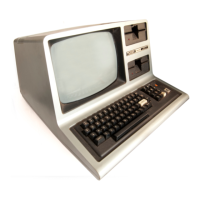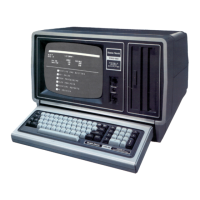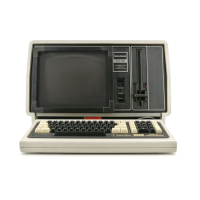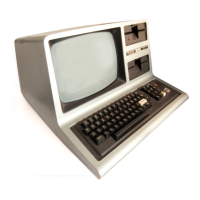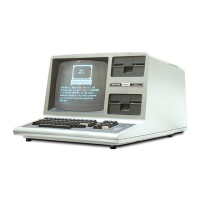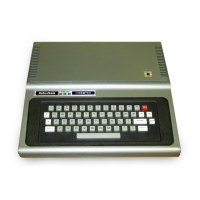T (Type ASCII)
Taddress
Enter the above command line to type ASCII characters directly into
memory, starting
at
address. If you omit address, DEBUG uses the
current memory modification address (shown by the vertical bars).
Example:
TCB01
(SPACE
BAR)
displays the address
CB01
and
its current contents
in
ASCII code.
If
the contents of the address are out of the ASCII character range, then
a period
is
displayed.
DEBUG then prompts
you
to
enter the new ASCII contents for CB01.
Type:
A
to
enter the hex value for
A,
which
is
41,
in
address CB01.
Pressing
(SPACE
BAR)
advances memory one byte without changing its
contents. DEBUG continues
to
prompt you to add ASCII values until
you press
(ENTER)
to exit the command.
V (Compare)
Vfirst address,second address,length
Enter the above command line to compare a block of memory
beginning at
first address to the block of memory beginning at
second address. The compare
is
for the specified length
in
bytes
(X'0001' - X'FFFF).
Example
l.JCB00
tEF02
t45
(ENTER)
compares a 45-byte long block of memory beginning at CB00 to a
45-byte long block of memory beginning at EF02. The first byte of the
block of memory beginning
at
CB00 that does not match is displayed
as the first byte of memory
in
the DEBUG monitor. The corresponding
byte
in
the block of memory beginning at EF02 becomes the current
memory modification address that
is
used by the
H,
A,
E,
and T
commands.
W (Word)
Waddress, word
Enter the above command
to
search memory for word, beginning at
address. word must
be
in
the least significant byte, most significant
byte format.
1-63
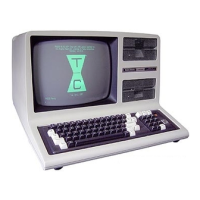
